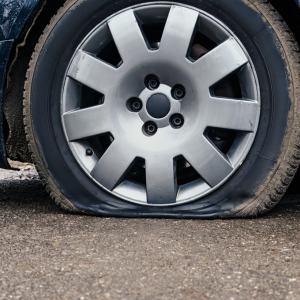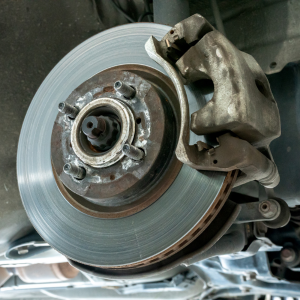Driving with a punctured tire is a scenario many motorists may encounter at some point, whether due to a slow leak or a sudden blowout. While the temptation to continue driving may be strong, it’s crucial to understand the potential dangers and consequences associated with this decision. This article aims to shed light on what happens when you drive with a punctured tire, from the immediate effects on vehicle handling to the long-term damage it can inflict.
Immediate Effects on Vehicle Handling
When a tire is punctured, the first noticeable impact is on the vehicle’s handling. The affected tire loses air pressure, causing an imbalance in the suspension system. This leads to uneven weight distribution, making the car pull to one side. Steering becomes more challenging, and maintaining control becomes a struggle, especially during turns. The driver may experience increased vibrations and a general lack of stability, turning a routine drive into a potentially hazardous situation.
Increased Risk of Blowouts
Continuing to drive with a punctured tire significantly increases the risk of a complete blowout. As the compromised tire struggles to support the vehicle’s weight, it becomes more susceptible to heat buildup and structural failure. This heightened vulnerability makes it prone to bursting, putting both the occupants of the vehicle and others on the road in immediate danger. A blowout at high speeds can lead to loss of control, resulting in a potentially catastrophic accident.
Exacerbating Tire Damage

Driving with a punctured tire can exacerbate the initial damage. The continuous rotation and friction against the road surface cause additional stress on the already compromised tire. This can lead to further tearing, shredding, or complete separation of the tire tread. The more the tire is driven in this state, the more irreversible the damage becomes. What might have initially been a repairable puncture can escalate into a situation where the entire tire needs replacement.
Strain on Vehicle Components
The consequences of driving with a punctured tire extend beyond the tire itself. The strain on the affected tire puts additional stress on various vehicle components, including the suspension system, wheel bearings, and even the transmission. The suspension system, designed to absorb shocks and provide a smooth ride, is forced to compensate for the imbalance caused by the deflated tire. This can lead to premature wear and tear, affecting the overall performance and safety of the vehicle.
Decreased Fuel Efficiency
Driving with a punctured tire also has implications for fuel efficiency. The added resistance from the compromised tire increases the overall workload for the engine. This heightened workload translates into increased fuel consumption as the engine works harder to maintain the vehicle’s speed. Over time, this can result in a noticeable decrease in miles per gallon (MPG), ultimately impacting the driver’s wallet and contributing to environmental concerns.
Exposing the Rim to Damage
Continuing to drive with a punctured tire exposes the wheel rim to potential damage. As the tire loses air pressure, the rim comes into direct contact with the road surface during driving. This metal-to-road contact can cause abrasions, dents, or even cracks on the rim. Damaged rims not only compromise the structural integrity of the wheel but also pose a risk of sudden failure, leading to a loss of control while driving.
Compromised Braking Performance

Braking performance is a critical aspect of vehicle safety, and driving with a punctured tire can compromise this crucial function. The imbalanced weight distribution affects the vehicle’s ability to come to a quick and controlled stop. Emergency braking maneuvers become less effective, increasing the risk of collisions, especially in unexpected situations. This diminished braking performance poses a serious threat to both the driver and other road users.
Roadside Repair Challenges
While some punctures can be repaired on the roadside, continuing to drive on a flat or severely deflated tire makes the repair process more challenging. When a tire is driven in a compromised state, the likelihood of irreparable damage increases. Additionally, attempting to repair a tire in unsafe conditions, such as on a busy highway or in adverse weather, can pose risks to the individual attempting the repair. It is essential to prioritize safety and seek professional assistance when dealing with punctured tires.
Long-Term Impact on Tires and Alignment
Driving with a punctured tire can have lasting effects on the overall health of the tire and the vehicle’s alignment. The prolonged stress on the tire’s internal structure can lead to internal damage that may not be immediately visible. Furthermore, the imbalanced weight distribution can cause misalignment issues, affecting the vehicle’s handling, steering responsiveness, and tire wear patterns. Neglecting to address these issues promptly can result in more extensive and costly repairs down the line.
Safety Tips and Precautions
To avoid the dangers associated with driving on a punctured tire, motorists must be proactive and follow these safety tips:
- Regular Tire Inspections: Routinely inspect tires for signs of damage, such as punctures, cuts, or bulges. Address any issues promptly to prevent further damage.
- Maintain Proper Tire Pressure: Regularly check and maintain the recommended tire pressure levels. Properly inflated tires enhance vehicle performance, fuel efficiency, and overall safety.
- Carry a Spare Tire and Tools: Ensure your vehicle is equipped with a spare tire, jack, and lug wrench. Familiarize yourself with the process of changing a tire to be prepared for roadside emergencies.
- Avoid Overloading: Adhering to the vehicle’s weight limit prevents unnecessary strain on tires and reduces the risk of punctures or blowouts.
- Drive Cautiously: If you suspect a punctured tire, reduce speed and drive cautiously to minimize stress on the damaged tire and enhance overall safety.
- Seek Professional Assistance: If faced with a punctured tire, seek professional help to assess the extent of the damage and determine whether a repair or replacement is necessary.
Impact on Tire Tread Wear
One of the overlooked consequences of driving with a punctured tire is the impact on tire tread wear. The compromised tire, struggling to maintain optimal contact with the road, experiences uneven pressure distribution. This uneven wear not only reduces the tire’s overall lifespan but also compromises its ability to provide proper traction. Tires with irregular tread wear patterns may fail to grip the road effectively, especially in wet or slippery conditions, further increasing the risk of accidents.
Environmental Impact
Continuing to drive on a punctured tire not only affects the safety of the driver and passengers but also has environmental implications. The increased fuel consumption resulting from the added resistance can contribute to higher carbon emissions. Additionally, the premature wear and tear on tires lead to more frequent replacements, contributing to the environmental impact of tire disposal. By addressing punctured tires promptly and practicing regular maintenance, drivers can play a role in minimizing their environmental footprint.
Financial Consequences
Driving with a punctured tire can have financial repercussions that extend beyond the immediate need for tire replacement. The strain on various vehicle components may result in expensive repairs. Moreover, the decreased fuel efficiency adds up to higher fuel costs over time. Neglecting to address a punctured tire promptly can lead to a domino effect of costly repairs and replacements, significantly impacting the driver’s budget.
Legal Ramifications
In certain jurisdictions, driving with a visibly damaged or flat tire can lead to legal consequences. Law enforcement may consider it a safety violation, resulting in fines or penalties. Additionally, if an accident occurs due to a blowout or loss of control resulting from a punctured tire, the driver may be held liable for damages. Understanding and adhering to local traffic laws and regulations is essential for avoiding legal ramifications associated with driving on a compromised tire.
Emergency Situations and Roadside Assistance
In the event of a punctured tire, having access to roadside assistance can be a lifesaver. However, continuing to drive on a flat tire may limit the effectiveness of these services. Towing a vehicle with a flat tire can be more challenging and may incur additional costs. When faced with a punctured tire, especially in remote areas or during adverse weather conditions, the lack of immediate assistance can compound the risks and challenges of the situation.
Educational Efforts and Awareness
To mitigate the risks associated with driving on a punctured tire, there is a need for increased educational efforts and awareness campaigns. Drivers should be informed about the importance of regular tire maintenance, the potential dangers of driving on compromised tires, and the steps to take in case of a puncture. Automotive manufacturers, tire retailers, and government agencies can collaborate to create initiatives that promote tire safety and responsible driving practices.
Final Words
Driving with a punctured tire is not only risky but can lead to a cascade of consequences, affecting vehicle handling, safety, and long-term performance. Motorists should prioritize regular tire maintenance, promptly address any signs of damage, and exercise caution to ensure a safe driving experience. By understanding the potential dangers and consequences, drivers can make informed decisions that contribute to both their safety and the well-being of others on the road.

